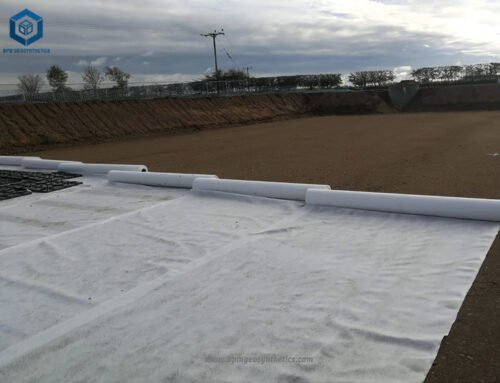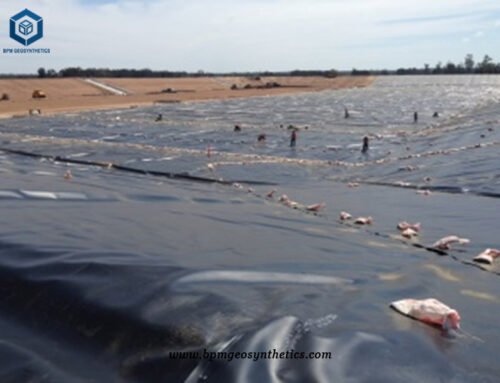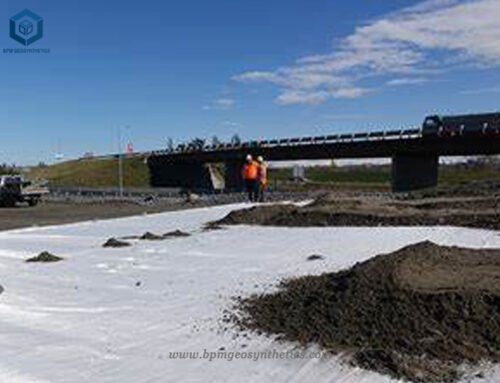Plastic dam lining material, also known as HDPE dam liner, is the kind of high density polyethylene waterproof geomembrane which offers excellent solution to prevent leakage and is the ideal geotechnical material used for dam lining applications. Considering that the pumped storage power station has high requirements for the seepage prevention of the upper reservoir, the use of seepage prevention not only requires a large investment, but also is difficult to guarantee the seepage prevention effect. Because the bottom system of the upper reservoir is reshaped by lowering the ridge between the two gullies and filling the valley, the maximum filling height is about 70m, and the problem of uneven settlement and deformation of the bottom of the reservoir is more prominent. In order to adapt to the influence of uneven settlement and deformation, it is better to adopt a flexible anti-seepage method at the bottom of the reservoir. After researching and comparing four kinds of flexible anti-seepage material schemes: plastic dam lining material, asphalt concrete panel, clay geomembrane + clay, under the premise of satisfying leakage and adapting to uneven settlement and deformation, after the bottom anti-seepage in the feasibility study stage Determine the bottom anti-seepage scheme of plastic dam lining material and clay combination with relatively low investment and easy post-repair treatment.
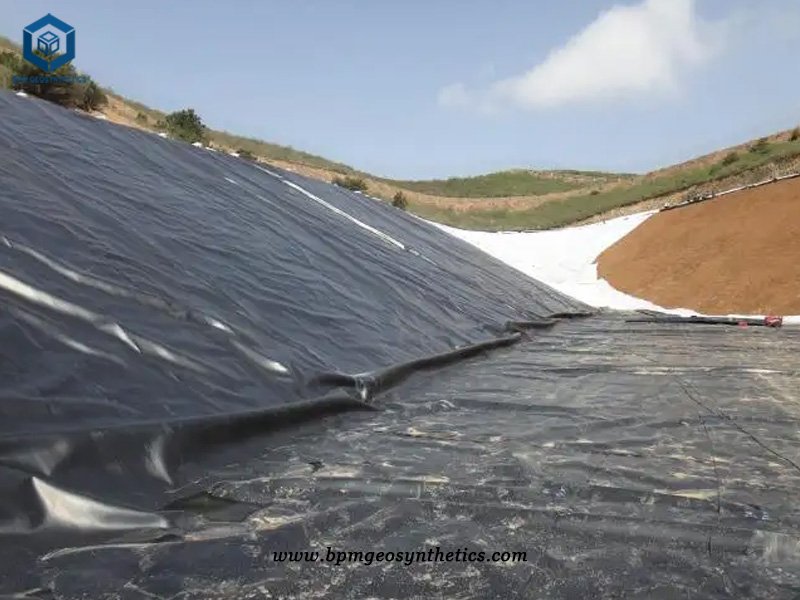
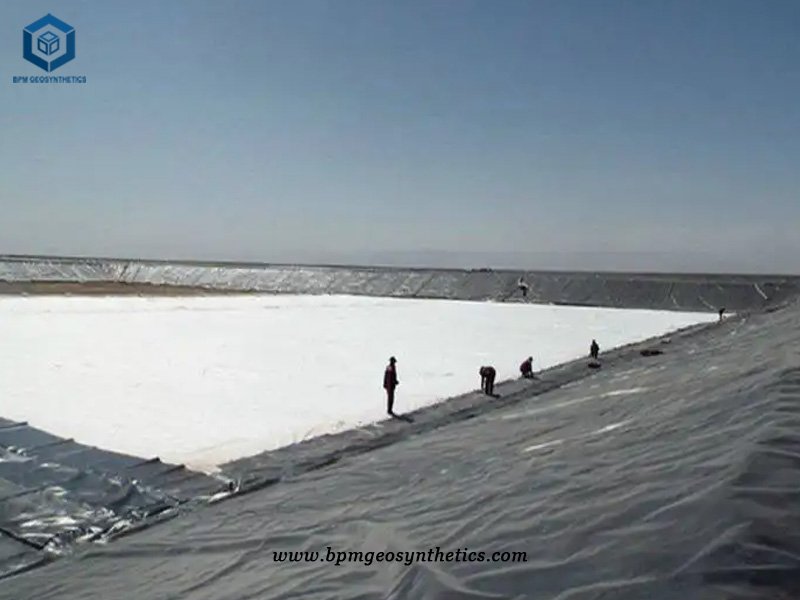
CASE STUDY
- Location – Kenya
- Product(s) – Plastic Dam Lining Material
- Application – Dam Project
Issue
There is no doubt that dams have brought enormous benefits to mankind. But over time, some of the negative impacts of the dam have become increasingly apparent. Such as soil erosion, environmental pollution, etc.
Solution
The biggest feature of geomembrane as an anti-seepage plastic dam lining material is its good anti-seepage effect. Therefore, it is widely used in the outer layer waterproofing of dams and reservoirs and other projects. In addition, the construction technology is simple, there are not many requirements, the construction cost is low, and the waterproof effect is good. Therefore, most of the anti-penetration materials of water conservancy projects use geomembrane. In addition, because the plastic dam lining material itself has good mechanical properties, the application of geomembrane dam liner materials to the construction of water conservancy projects can improve the mechanical properties and internal structure of the dam itself, thereby improving the construction quality.
When the soil plastic deformation occurs, the geomembrane material will also undergo a certain plastic deformation. When the dam is subjected to a certain tensile stress, the geomembrane material has a certain tensile strength, which can reduce the tensile stress on the dam and prevent the dam itself from being subjected to excessive pressure and cause cracks. There is a relative displacement between the composite geomembrane and the wall core, which reduces the relative displacement of the upper dam shell and has a certain inhibitory effect on the horizontal displacement of the dam. The principle is that the tensile strength of the geomembrane plays a role.
Under heavy rain conditions, the plastic dam lining material and slope protection structure can play a protective role. In places without geomembrane coverage, it can prevent particles from scattering and flying, thereby forming some potholes; in places covered with geomembrane, raindrops hit the geomembrane and disperse. The pressure is reduced and the impact on the slope protection is reduced. At the same time, since the geomembrane is impermeable, raindrops flow along the geomembrane to its edge, causing some grooves to form on the edge of the geomembrane. After erosion, soil infiltration capacity gradually decreases, and then slope runoff is formed. Runoff is formed between the geotextiles and dispersed by the geomembrane, allowing rainwater to flow down in a laminar flow. Plastic dam lining material can follow the construction steps.
1. Material inspection. Before the geomembrane laying construction, the membrane material must be inspected to check whether the material performance index is consistent with the actual needs of the project, and at the same time, the on-site quality inspection should be carried out, and the inspection can only be used for on-site construction.
2. Base surface cleaning. Before the geomembrane is laid, it is necessary to remove the hard protrusions of stones in the sandy soil layer at the bottom of the water system, and there are no other adhering sundries on the ground.
3. Geomembrane laying. First, measure the size, and number the building materials one by one according to the actual size of the building materials used. Then, while laying the geomembrane, carry out the tamping work. Each piece of membrane material is spliced by overlapping, welding or bonding methods until the laying is completed. .
4. Laying quality inspection. After the splicing and laying of the geomembrane is completed, the quality of the laying shall be checked. First, check whether it is caused by pulling and damage during the compaction work, or whether the exposed geomembrane has not been pressed to stabilize the folds, and then whether there are loose splicing, jump welding, interlayer, etc.
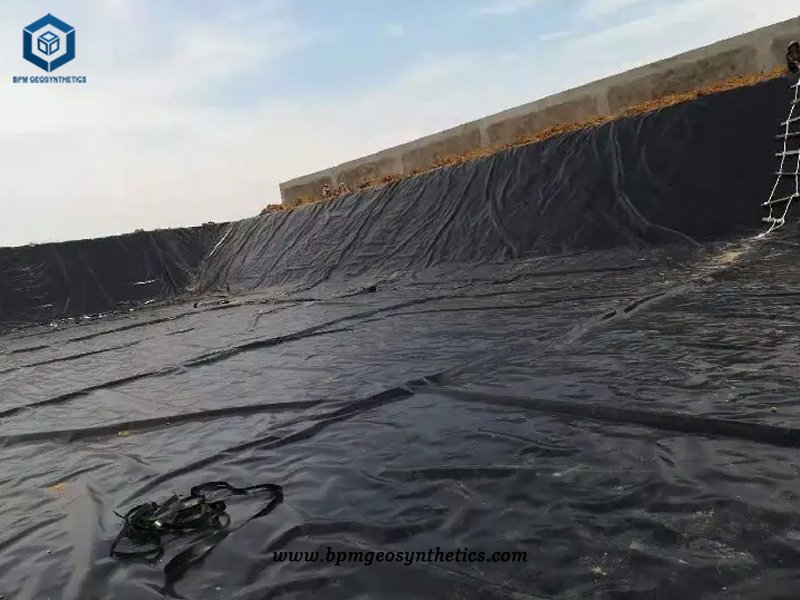
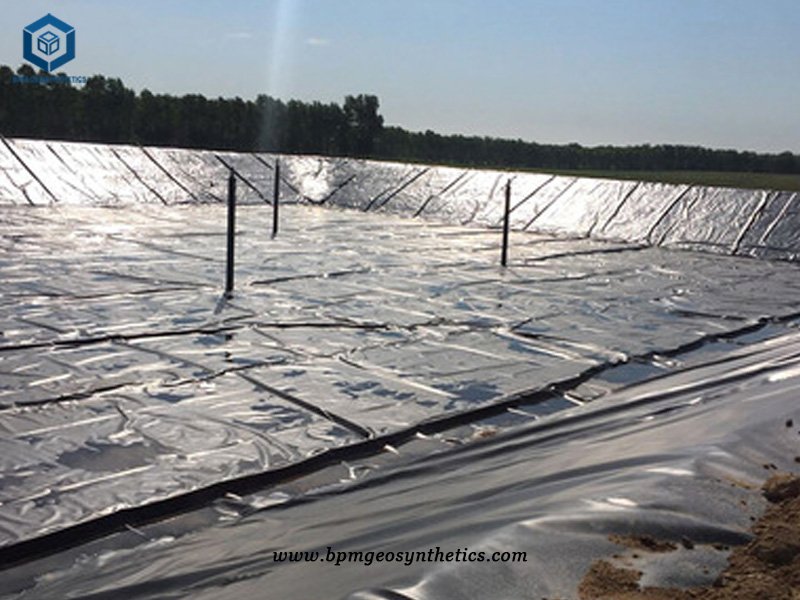
Benefits
- HDPE geomembrane dam liner is a flexible waterproof material with high anti-seepage coefficient;
- HDPE plastic dam lining material has good heat resistance and cold resistance, and its use environment temperature is high temperature 110 ℃, low temperature -70 ℃;
- HDPE geomembrane dam liner has good chemical stability, can resist the corrosion of strong acid, alkali and oil, and is a good anti-corrosion material;
- HDPE geomembrane liner has high tensile strength, which makes it have high tensile strength and can meet the needs of high-standard engineering projects;
- HDPE geomembrane has strong anti-aging properties, and can be used for a long time to maintain the original performance;
- HDPE geomembrane has strong tensile strength and elongation at break, so that HDPE geomembrane can be used in various harsh geological and climatic conditions.
Summary
HDPE Geomembrane is a kind of waterproof barrier material based on high polymer polymer. HDPE geomembrane is made of high-quality virgin resin, the main component is 97.5% high density, about 2.5% carbon black, anti-aging agent, antioxidant, ultraviolet absorber, stabilizer and other auxiliary materials.
It has good resistance to environmental stress cracking and chemical corrosion resistance; good chemical corrosion resistance; has a large operating temperature range and a long service life, and is widely used in biogas digesters, tailings storage sites, and channel seepage prevention , Dam seepage prevention subway project, etc.
Specifications of Plastic Dam Lining Material for Dam Construction Project in Kenya
- Total HDPE Geomembrane quantity–56,000 squares meters
- Geomembrane Specifications – 1.5mm
- Each roll size is 7m*50m
About BPM
BPM has been specializing in delivering one stop geosynthetics products and solutions to worldwide customers since its foundation in 2007. BPM had provided many types of effective and state of the art geomembranes, geotextiles, geocells, geosynthetic clay liners (GCLs), drainage boards, geogrids to over 81 countries. Our main customers are from Australia, France, Sweden, UK, Hong Kong, Hungary, New Zealand, Poland, Mexico, Ecuador, Brazil, Pakistan, Bangladesh, Thailand, Vietnam, Malaysia, Indonesia, Singapore, Philippines, Sri Lanka, India, UAE, Saudi Arabia, Qatar, Kenya, Ghana, Ethiopia, Somalia, Nigeria, South Africa, Swaziland, Mongolia, etc.
BPM is not only manufacturing best quality geosynthetic products but also providing professional design and installation service. OEM, ODM, custom development and fabrication are also available. If you have any questions or inquiries, please fill and submit the following form, we will reply as soon as possible.


